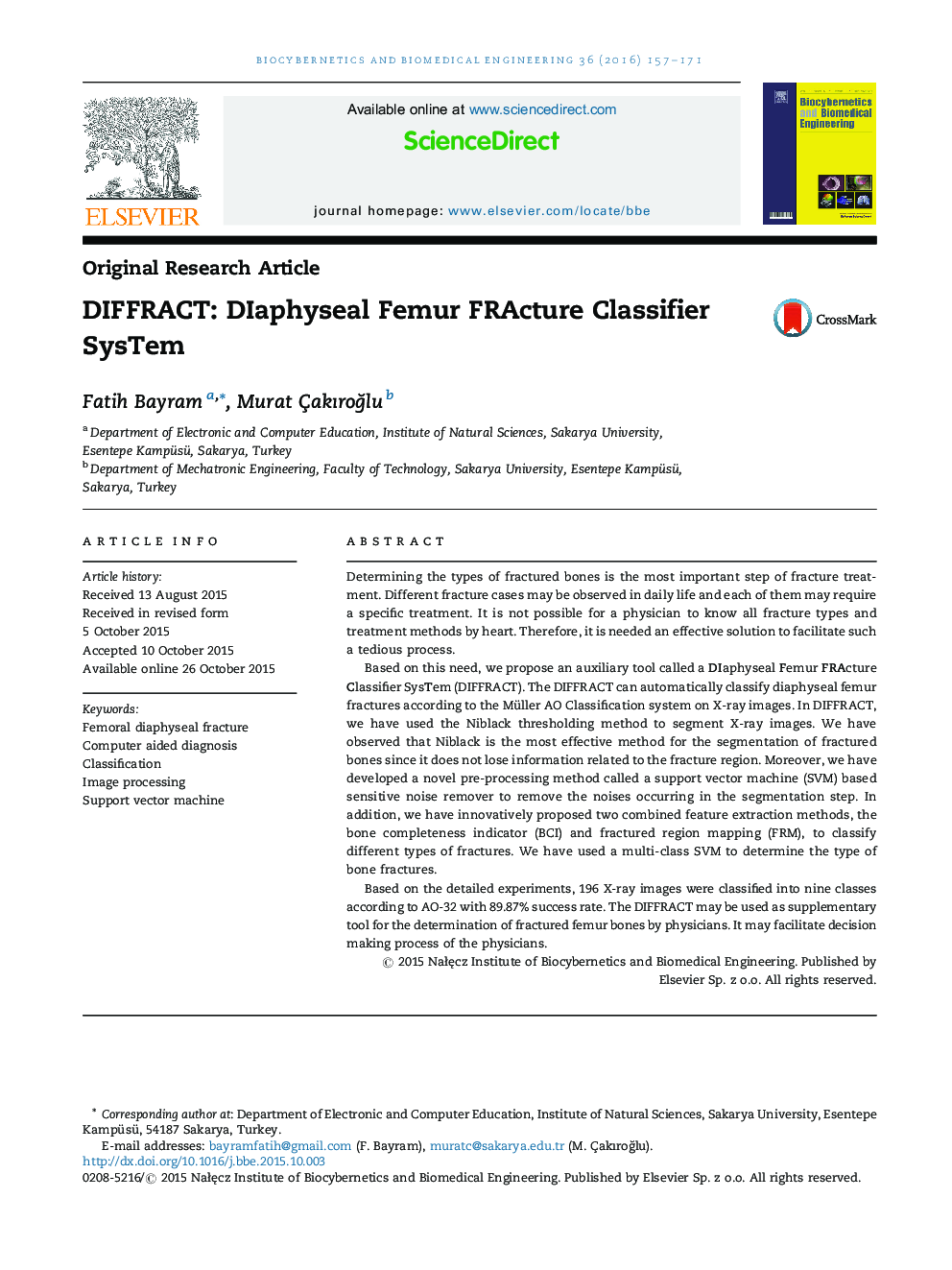| کد مقاله | کد نشریه | سال انتشار | مقاله انگلیسی | نسخه تمام متن |
|---|---|---|---|---|
| 5119 | 341 | 2016 | 15 صفحه PDF | دانلود رایگان |

Determining the types of fractured bones is the most important step of fracture treatment. Different fracture cases may be observed in daily life and each of them may require a specific treatment. It is not possible for a physician to know all fracture types and treatment methods by heart. Therefore, it is needed an effective solution to facilitate such a tedious process.Based on this need, we propose an auxiliary tool called a DIaphyseal Femur FRActure Classifier SysTem (DIFFRACT). The DIFFRACT can automatically classify diaphyseal femur fractures according to the Müller AO Classification system on X-ray images. In DIFFRACT, we have used the Niblack thresholding method to segment X-ray images. We have observed that Niblack is the most effective method for the segmentation of fractured bones since it does not lose information related to the fracture region. Moreover, we have developed a novel pre-processing method called a support vector machine (SVM) based sensitive noise remover to remove the noises occurring in the segmentation step. In addition, we have innovatively proposed two combined feature extraction methods, the bone completeness indicator (BCI) and fractured region mapping (FRM), to classify different types of fractures. We have used a multi-class SVM to determine the type of bone fractures.Based on the detailed experiments, 196 X-ray images were classified into nine classes according to AO-32 with 89.87% success rate. The DIFFRACT may be used as supplementary tool for the determination of fractured femur bones by physicians. It may facilitate decision making process of the physicians.
Journal: Biocybernetics and Biomedical Engineering - Volume 36, Issue 1, 2016, Pages 157–171